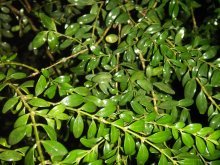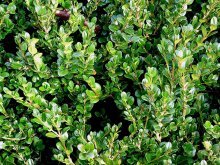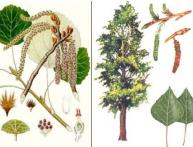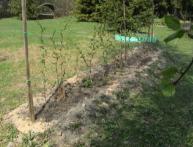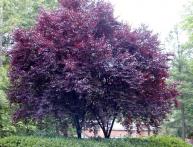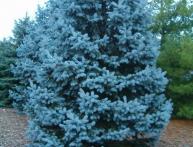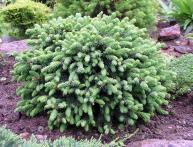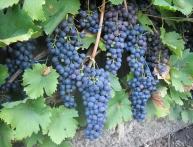We discover the secrets of growing evergreen boxwood: planting, care, diseases
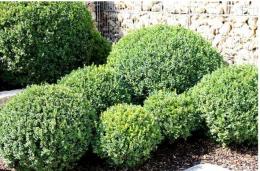
Boxwood or buxus is an evergreen shrub from the Boxwood family. It has a very slow growth rate. Most types of boxwood are thermophilic, therefore in open ground can only be grown in regions with warm winters. Evergreen boxwood, which has sufficient frost resistance, has become widespread in Russia.
Content
Description of boxwood, choice of planting site
Buxus can also be grown indoors. In this case, it is very often used to create bonsai. This shrub is also suitable for container culture. In its natural form on the territory of Russia, boxwood plantings can be found in the Krasnodar Territory and the Caucasus. There it grows under the canopy of deciduous forests.
This shrub is also listed in the Red Book of the Russian Federation. Boxwood tolerates transplantation quite easily, so it can be grown in a personal plot, the main thing is to choose a suitable place for planting it.
Soil and lighting
Buxus can grow on almost any soil, as long as it is not waterlogged or acidic. But this one is best bush develops on fertile loams.
On sandy loam soils, it is recommended to add a mixture of clay and compost into the planting hole.Boxwood is a shade-tolerant plant, so it feels best in the shade of trees.
It can also grow in an open sunny place, but in this case, during prolonged summer heat, its leaves may acquire a yellowish tint. Attention! Boxwood is an evergreen plant, so spring winds and bright sun can cause especially severe damage to its leaves. To protect shrubs growing in the open from this, in the spring it is recommended to cover them for a while with non-woven covering material.
Boxwood care
Boxwood is a rather interesting and unpretentious plant, but sometimes it can suddenly become ill and die. This problem is common to almost all evergreen crops; to prevent this, you need to properly care for it.
The most critical stage in growing boxwood is autumn and winter. If you do not look after the plant at this time, then there is a very high probability that it will die. The first thing to do is to water the soil under the bushes very well. Watering is carried out before the onset of stable frosts, around the end of October.
This will help the bush get enough moisture throughout the winter. Next, you need to carefully mulch the surface of the soil under the bushes. Well-rotted pine litter or peat can be used as mulch. Attention! Leaves cannot be used as mulching material; during wintering they rot and become a source of fungal diseases.
Winter shelter
After the temperature drops below - 10°C, they begin to winter shelter the boxwood. If the bush was formed in the form of a trunk, then it must first be tied up so that during the winter the snow does not break its stem.
After this, the bush is wrapped in several layers of covering material or tied with spruce branches. If a border or hedge is created from buxus, then they are covered entirely with non-woven material, the edges of which are fixed with an earthen layer.
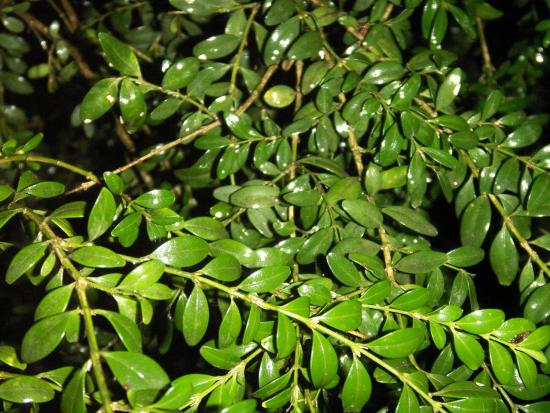
The cover is removed approximately in the second half of March, if this is delayed the bush may dry out. The plant should be gradually accustomed to the bright spring sun. To do this, after removing the winter shelter, one layer of non-woven material is left on the plants.
Watering and fertilizing
Boxwood is a moisture-loving plant, so watering must be timely and abundant. Under no circumstances should the soil under the bushes be allowed to dry out completely. The plant may react to this by dropping leaves, and in the event of prolonged drought, even die. It is best to water the buxus plantings in the morning or evening.
During the season, boxwood can be fed several times. The reddish color of the leaves indicates insufficient nutrition of the plant. For feeding, it is best to use special liquid fertilizers for coniferous plants. You can also use long-acting granular fertilizers, which only need to be applied once a year.
It is recommended to feed young, actively growing specimens with potash fertilizers in the fall. This will speed up the ripening process of green shoots and allow the bushes to better overwinter.
Trimming
To the bushes boxwood had a neat and well-groomed appearance, they need to be cut annually. It is best to carry out a haircut in early spring, and it is necessary to remove frozen and dry branches. With the help of pruning, buxus bushes can be given almost any shape.It is enough to form a bush once, and then just adjust it.
When pruning, young growth is usually cut out; old branches are pruned only if absolutely necessary. In general, healthy boxwood bushes tolerate pruning quite easily.
Video about growing boxwood and caring for it:
And the more often it is carried out, the thicker and more magnificent the bushes turn out. Professional landscapers recommend adjusting the crown of bushes monthly. But it should be taken into account that the more often the hair is cut, the more nutrients the bushes require. Consequently, they will need to be watered and fed more and more often.
Possible diseases and pests
The most important buxus disease is shoot necrosis. It is characterized by the following symptoms:
- Dying of shoot tips
- Leaf fall
- Leaf spot
The cause of necrosis is the fungus Volutella buxi. Fight it disease using pruning of infected branches and fungicides. These drugs are used to repeatedly treat diseased plants. The most common pest found on buxus is the boxwood gall midge. At the beginning of summer, she lays eggs on young leaves located at the ends of the branches.
The larvae that hatch from them feed on the leaves, and during the winter they bite into the shoots, where they remain until spring. In the spring, a new development cycle of the pest occurs. If there are too many gall midges on a boxwood bush, almost all the leaves can fly off, and the plant itself can eventually die. This pest is destroyed using systemic insecticides that have a long period of protective action. For example, you can use the following drugs:
- Aktar
- Fufanon
- alatar
Breed them according to the attached instructions. Also, treatment should be carried out in several doses with an interval of 10 days. Among the pests on boxwood, you can also find cottonweed. Signs of its appearance are swelling on the leaves and drying out of the shoots. The fight against it is carried out in the same way as against gall midge. During a long drought, boxwood can be attacked by spider mites.

A sign of its appearance is a sticky web, which in advanced cases can cover a significant part of the plant. To destroy this pest drugs with acaricidal action are used. For example, “Fitoverm” or “Aktellik” show good results. Growing boxwood is fraught with certain difficulties. But all of them are more than compensated by its spectacular appearance.

